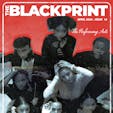BY: ZSHEKINAH COLLIER

Photo by Stuart Mackenzie.
"In my bag here, I have a foolproof method for controlling your black slaves. I guarantee every one of you that, if installed correctly, it will control the slaves for at least 300 years."
This was allegedly said by Willie Lynch during the speech, "The Making of a Slave," in 1712. Lynch was a slave master from the West Indies, and was invited to the States to teach other slave masters how to control their slaves. His "method" was based on using the differences of Black people to divide them. The "color or shade" of a person's skin was emphasized on his long list of controlling tactics.
While historians have largely agreed the speech is fake, the history is real. Colorism has divided the Black community for centuries and continues to do so today.
As most people know, colorism is not new. House slaves were divided from field slaves. Uptown Blacks were divided from downtown Blacks. With social media, colorism has manifested into a debate over #teamlightskin versus #teamdarkskin. As a community, we did not create colorism, but we do perpetuate it.
Throughout slavery, those with a lighter complexion were typically treated better than their darker counterparts, usually was because they were the children of the master. The special treatment helped develop colorism and the idea that dark skin is inferior to light skin.
This belief was passed down and intensified in the 20th century with the Brown Paper Bag Test. This test determined the degree of one's privilege based on their complexion. To be accepted into certain colleges, get hired for some jobs, and gain entry into many Black clubs, churches or Greek organizations, a person had to be lighter or as light at a brown bag.
When I think about how deeply colorism is rooted in the Black community, it makes me think back to my childhood. Although the test was not physically administered in the early 2000s, the ideology was—and still is—very present.
In elementary and middle school, my classmates excluded me because I was too dark. I recall a family friend blatantly saying that I was jealous of her light-skinned daughter because she was "prettier" and had "better," longer hair than I did. I would often look in the mirror hoping to be prettier or, better yet, lighter so that I would be considered pretty.
As intended, colorism has divided Black people. It is a direct cause of self-hatred and internalized racism. We have allowed for skin color to decide everything about a person—how educated they are, how successful they might be, whether or not they're a good person. We also use it to measure Blackness, even though Blackness is not actually measurable in that way.
Based on colorism, dark-skinned people—especially dark-skinned women—are perceived as loud, ugly, poor, uneducated and unkempt with "nappy" hair. Conversely, light-skinned people are depicted as calm, sensitive, attractive, wealthy and educated, and are said to have "good" hair.
As with all stereotypes, these aren't inherently true. As a community, we have allowed the ideology of white supremacy to shape how we view and respect each other. Don't get me wrong; in no way do I only blame Black people for colorism. It was forced on us and passed down over generations. But I do believe that we now have the ability and power to remove it from our community.
To start, let's stop validating stereotypes and attributing behavior to skin color. We should stop using language that perpetuates colorism, such as "light-bright," and warning others to stay out of the sun for too long out of fear of becoming too black. Black people often use these phrases jokingly, without realizing or intending the subsequent impact. But rather than focus on our differences in such a counterproductive way, we should embrace the range and uniqueness of Blackness and Black people.


